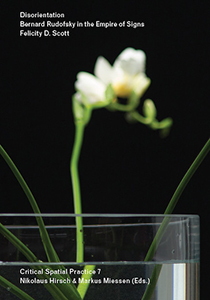Felicity D. Scott reconsiders the learnings of Bernard Rudofsky on vernacular
architecture in the light of his relation with
Japan.
Viennese émigré architect Bernard Rudofsky (1905-1988) is most frequently recalled for curating “Architecture without Architects,” the famous 1964 photography exhibition of vernacular, preindustrial structures at the Museum of Modern Art in New York. Far from simply a romantic or nostalgic invocation of cultures lost to industrial modernity, Rudofsky's exhibition drew on decades of speculations about modern architecture and urbanism, particularly their semantic, technological, institutional, commercial, and geopolitical influences. Focusing on Rudofsky's encounters with Japan in the 1950s—he described postwar Japan as a “rear-view mirror” of the American way of life—architectural historian Felicity D. Scott revisits the architect's readings of the vernacular both in the United States and Japan, which resonate with his attempts to imagine architecture and cities that refused to communicate in a normative sense. In a contemporary world saturated with visual information, Rudofsky's unconventional musings take on a heightened resonance.
Felicity D. Scott is associate professor of architecture, director of the PhD program in Architecture (History and Theory), and co-director of the program in Critical, Curatorial and Conceptual Practices in Architecture (CCCP) at the Graduate School of Architecture, Planning and Preservation, Columbia University. Her work as an architectural historian and theorist focuses on articulating genealogies of political and theoretical engagement with questions of technological and geopolitical transformation within modern and contemporary architecture, as well as within the discourses and institutions that have shaped and defined the discipline, sometimes evidently, sometimes less so.






